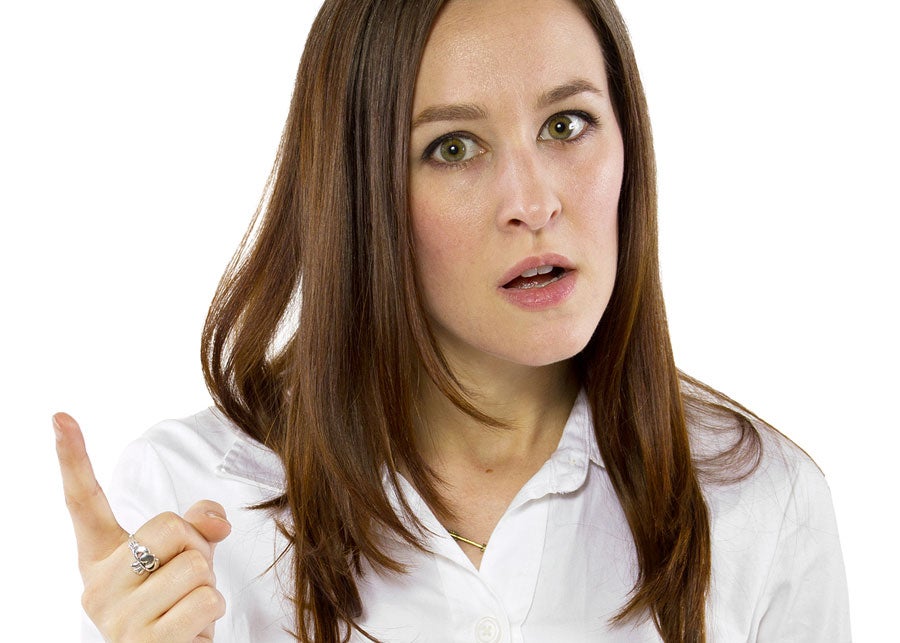
Bigstock
Rosalind's Classroom Conversations, February 2016
For Educators | For Parents, Families, and CaregiversBy Rosalind Wiseman
What would high school be without photographs? Smiling couples at the homecoming dance, athletes racing down fields to win games, actors performing in the spring play. It’s ironic that as much as people describe the awkwardness, drama and sometimes misery of high school, the official school pictures only show the best and happiest of moments.
Official school pictures have always been as perfectly curated as today’s middle schooler’s Instagram page.
We know that technology has changed so much of our lives but it’s also easy to lose sight of exactly how. Where we once had students walking around school to capture ‘official’ photos of what a school was like or the people who went there, that’s no longer the case. Now every student using their phone can take an image that represents not only their life but can also end up representing an entire community.
For better and for worse, photos show spontaneous moments. Sometimes those moments frozen in time appear to reflect the worst of someone’s character. And sometimes these images reveal things that people in the community have turned a blind eye to and that actually need to be addressed. But in the firestorm that erupts afterwards, often any lessons that can be learned are lost in a cycle of blame and denial that dominates the discussion.
Here’s the challenge we rarely talk about. An image never shows you the moments that lead up to when the person took the picture and rarely provides clarity or insight into the motivations of the people involved. All you know is what you think you see and then your individual biases and assumptions interpret the facts that seem so obvious.
A recent example took place at an Arizona high school when six white girls, after taking their official school pictures, wore t-shirts with individual letters on them and spontaneously arranged themselves to spell out the “n-word.”
There it was for the world to see: six smiling white girls posing for a picture on school grounds that spelled out the n-word. In a moment they not only looked racially ignorant or malicious, it also looked like they came from a community that supported their actions. Where were the teachers? Why didn’t another student stop them? What kind of community raised these awful girls?
It’s easy to blame. Not only the girls but everyone associated with them. And as usual, people did. When the image went viral, people all over the world felt justified to post self-righteous insults against the girls as well as their school, their school administrators, their parents and anyone else they could connect the girls to.
But those six girls went to a school with over 1400 students. For the most part, the people commenting on the story knew nothing about the past actions of the administrators, the girls’ parents, the community or the other students who attend that school.
In actuality, if you read the statements from the school administrators, they did exactly what they should have in their public comments on the issue: strongly condemn the girls’ actions and protect their privacy by refusing to say specifically what each one’s punishment would be until and unless it became public record.
It’s also clear from this Twitter post that many students did not agree with these students’ actions. And they want the world to know that.
When we hear about these moments in time—from people in our “real” lives to the moments we read or see online—we need to ask ourselves the following questions and talk to each other if we want to have a chance that we can learn from the experience.
Of course the conversations that come from answering any of these questions have the potential to be difficult—as in things can get heated. But having that discussion based on a process of self-reflection and listening to each other (i.e. being prepared to be changed by what you hear) is essential to learning from the experience no matter how we’re involved, even if that involvement is limited to nothing but commenting online. We have to because we are in danger of having the most reactionary, thoughtless words dominate our online community and that impacts all of us no matter what community in which we live.
"Here’s the challenge we rarely talk about. An image never shows you the moments that lead up to when the person took the picture and rarely provides clarity or insight into the motivations of the people involved. All you know is what you think you see and then your individual biases and assumptions interpret the facts that seem so obvious."